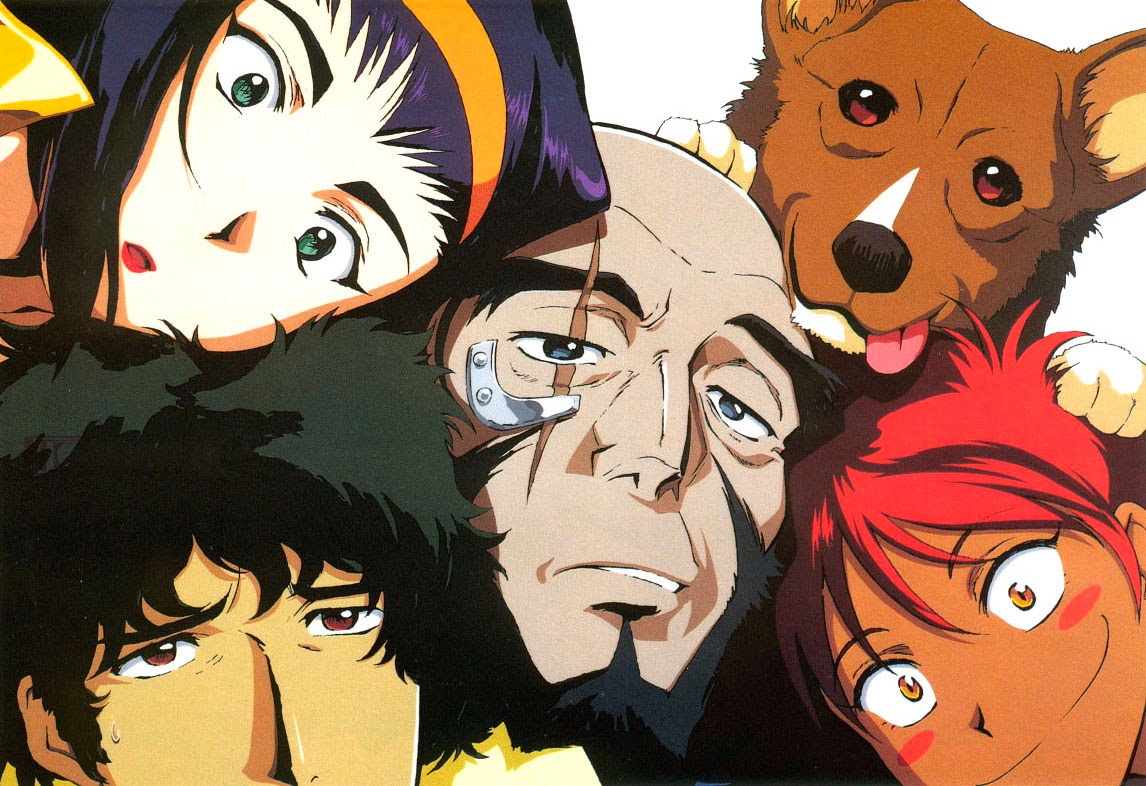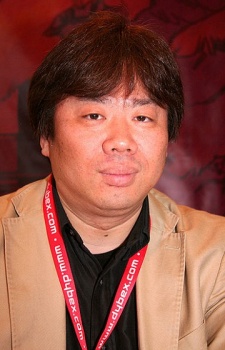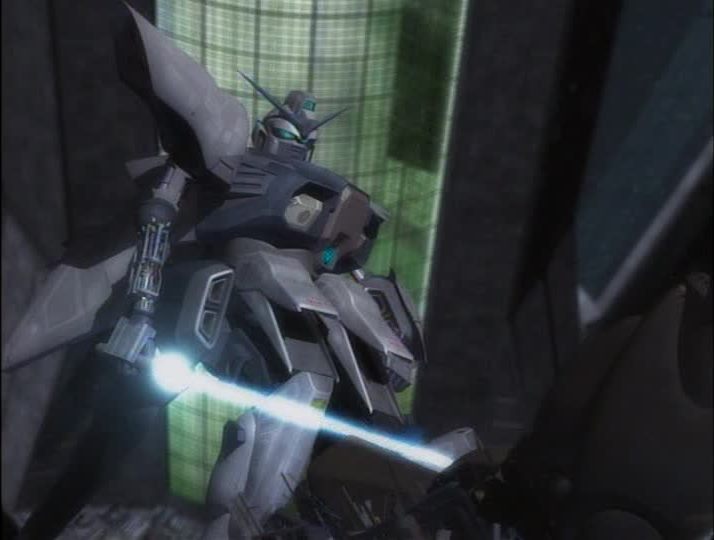Cowboy Bebop Designer Toshihiro Kawamoto Talks Art Styles and Live-Action Adaptations
Our interview with the character designer, animator, and Studio BONES co-founder at FanimeCon 2019.

Recently I had the pleasure of working with character designer Toshihiro Kawamoto at FanimeCon 2019 in San Jose, CA. The con had brought me in to moderate two of his events (including a live drawing session that has been uploaded to YouTube), and before getting on stage I had a chance to sit down for a one-on-one interview with Mr. Kawamoto.
Toshihiro Kawamoto is most well-known as a character designer thanks to his sleek, angular designs on series like Cowboy Bebop, Mobile Suit Gundam: The 08th MS Team, and Wolf’s Rain. But like many designers, he began his career as an animator. He worked his way up the ranks at Sunrise and eventually got a chance to design the characters for Mobile Suit Gundam 0083: Stardust Memory. After the critically acclaimed Cowboy Bebop, Kawamoto joined forces with a number of key Sunrise staff, including producer Masahiko Minami (who I interviewed nearly 10 years ago!) and animator Hiroshi Osaka, to split off and create their own studio: BONES.
20 years later, Kawamoto serves as an executive at BONES, though it seems that much of his time is still spent working away at his drawings, whether they’re character designs for Blood Blockade Battlefront or key animation and animation directing for Fullmetal Alchemist and Eureka Seven.
My conversation with Mr. Kawamoto covers a range of topics: his design process, his early years as an animator at Sunrise, his consultation on an ill-advised live-action Gundam movie, and yes, his thoughts on the upcoming Cowboy Bebop Netflix adaptation. A huge thank you goes out to Fanime guest staff Jinni and Isabel, interpreter Momo, and of course, Mr. Kawamoto for taking the time to speak with me. Enjoy!

Early in your career you were mentored by animator Sachiko Kamimura. How did you first start working with her?
I first met Ms. Kamimura when I was a key animator for ZZ Gundam. While I was on the project with her, I got to know her. I learned a lot and got some inspiration from Ms. Kamimura.
What kinds of things do you think you learned from her?
I talked to her recently and got the sense that she believes if you allow people to properly learn and train and grow they will be able to blossom into whatever talent they want to get into, and become a full professional in their field. Ms. Kamimura expressed that when I was the only young animator on the ZZ Gundam team. Working together while I was still pretty young and fresh, I think that was a big influence.
Back then and even now I’m not really sure why she was so taken with me and thought I had such great potential. In those days, we had no time to really focus on certain kinds of things. All we could do was sit down and draw as fast as possible. So I really don’t understand what Ms. Kamimura saw in me. Even today I think about it.
Ms. Kamimura had this idea that as long as you properly train and teach these young professionals, they would blossom into their full potential. For the past 30 years I’ve really taken that to heart.
Could you walk me through your process when designing a character?
There are two different kinds of processes, depending on whether the anime is original or an adaptation.
For adaptations, I personally feel like I don’t want to change the art. I don’t want to change the original style of the manga it’s adapting from. So I often work with the director, going back and forth and doing a kind of tag team thing to make sure that we accurately portray the original work.
When it comes to original animation, I often meet with the director and talk over what their vision is for the characters. I’ll take their descriptions and interpret them into art. Generally I’ll create three to five variations of those characters in order to pinpoint what the director is aiming for.
When trying to understand the director’s taste and what they’re aiming for, we often play “catch.” We go back and forth in order to find out how the characters should be portrayed. That was the process for Cowboy Bebop.
I know some directors contribute their own designs to that process. Is that common for you?
Yes, it does happen for directors that have artistic skills. But in terms of my own work, I often pair up with directors with no art skills. So the director might do a really rough sketch of what they’re imagining, but I generally draw it myself and provide that imagery so the director can decide what they want to do with it.
In terms of anime storyboards, generally directors will draw those out, and just by seeing the storyboards it’s easy to tell if the director has any artistic skill. For Cowboy Bebop, the director was Shinichiro Watanabe, who later worked on Space Dandy. When I compared the storyboards from the Cowboy Bebop days and the Space Dandy days, I noticed “oh, he’s improved his art skills a little bit.” And before Cowboy Bebop, Mr. Watanabe was an episode director and drew storyboards on Mobile Suit Gundam 0083: Stardust Memory. If you look at the storyboards from then, well… I don’t want to say too much because it’ll sound like I’m complaining or bad-mouthing, but … yeah. He’s come a long way.


Something that I admire about your work is that you have a distinctive character design style that’s very much your own, but your adapted works are a little more subtle and complement the original designer’s work. How do you decide where to add the Kawamoto touch and where to hold back a little bit?
Even though other people may think I have a distinct Kawamoto style, when I’m working on adaptations I really want to erase my own unique style. As a character designer, I aim to ensure that the character design techniques and the technical aspects are similar. But in terms of what I want to accomplish, I want to express the original work.
After working on Gundam 0083, I worked on character designs for different kinds of media like Leiji Matsumoto, Tatsuya Egawa, and Masamune Shirow’s works. For those I really tried to deemphasize my own style. But now that I’m thinking about it, I wonder if I didn’t do a good enough job. If I do have a distinct style, maybe I’m not erasing my own uniqueness enough.
While I was working on Golden Boy, I also worked on a Sega Saturn game for Gundam. Even though I worked on both Golden Boy and the Gundam project together, I was trying to make sure that they don’t cross over.
Actually, on the subject of Gundam, I have a question about a very weird Gundam project. You’re credited for conceptual design on G-Saviour.
G-Saviour?!
I’m curious what you actually did on that project.
If I look back on my memories, the G-Saviour project was made in collaboration with Studio Sunrise. I had never worked on a Hollywood adaptation ever in my life, so even though I had no experience and was very unsure of myself, through working on G-Saviour I tried to learn a lot and make sure the project went smoothly. In terms of what I did for G-Saviour, if something wasn’t going well or there were some hiccups during the production, then I would submit art for the character’s costumes or certain ideas for what the characters would do. I would express that in a storyboard and then submit the storyboards to help them move things along.

And that would get sent directly to the production team in Canada?
Oh right, it was probably too expensive to do it in Hollywood so they did it in Canada. So I would submit the artwork to Canada.
In fact, the reaction to the storyboards that I submitted to them was so positive, they were like, “Wow, I’ve never seen such beautiful and clean storyboards!” They were really happy to work with me and get those kinds of visuals. Even though they were really happy about it, it made me think, “If they’re so happy with this, where are their skill levels at? What are they used to?” It made me really uneasy to think, “What have they been doing so far?”
Speaking of live-action, I’m sure you’re aware of the live-action Cowboy Bebop series. Have you been consulted on it at all?
I haven’t touched the project at all. I’ve had zero participation in it.
I think it’s actually good that I haven’t had any part in making the adaptation. I think that if they asked for my opinion I would influence it too much in a certain direction, so I really want to see what they will make of it on their own.
But there are some things that I am a little bit surprised about. Like Spike Spiegel being played by an Asian actor. (EDITOR’S NOTE: He’s talking about Star Trek and Harold & Kumar’s John Cho.) “Spike Spiegel” is a German name, so I would have expected someone with German ancestry. I find these choices interesting but I don’t want to influence too much or say too much.

Are there any other projects of yours that you’d love to see adapted into a live-action Hollywood version?
I have a lot of challenges in drawing animals in animation. They’re really hard to draw for me. So I’m really interested in seeing a live-action adaptation of Wolf’s Rain. I think that with today’s CG technology it would be very possible.
